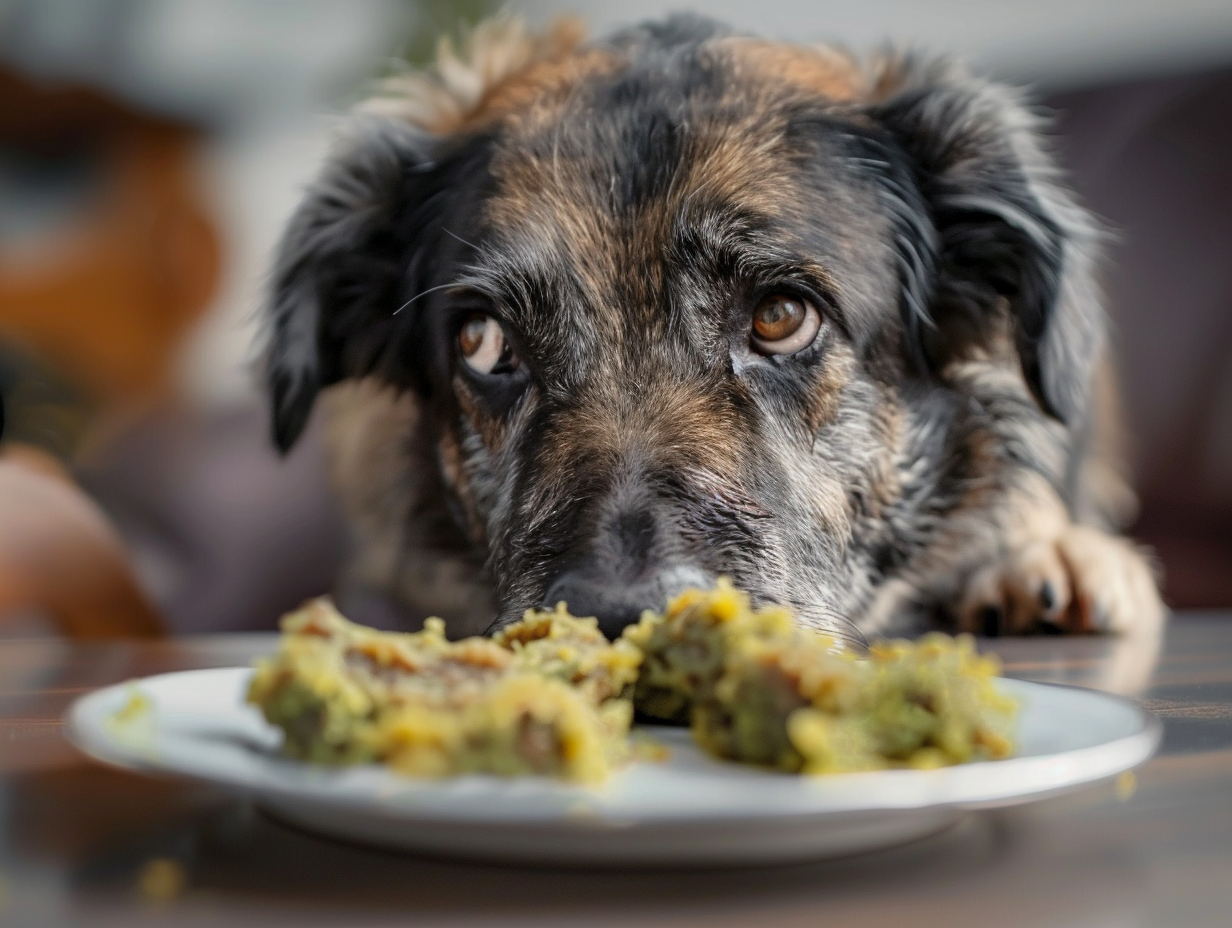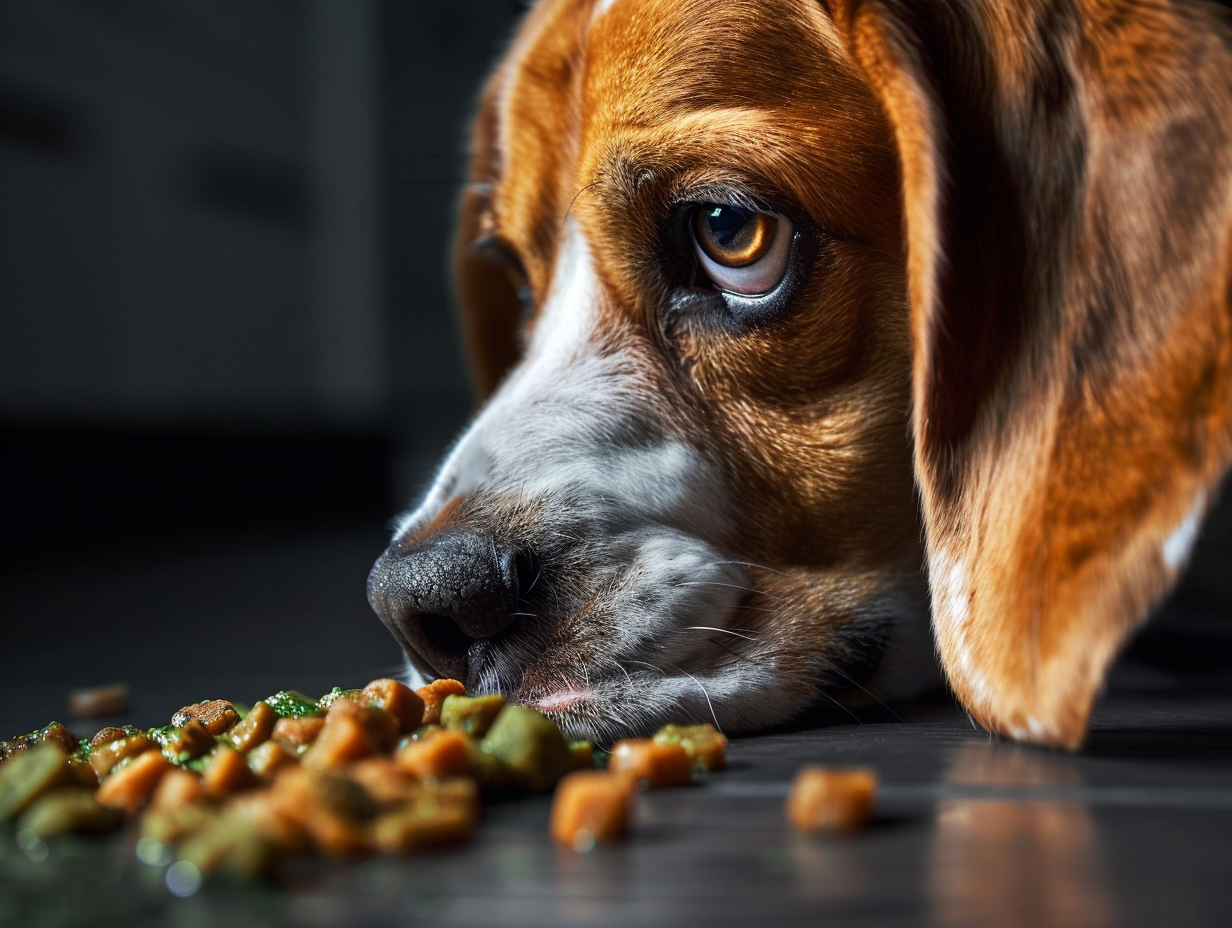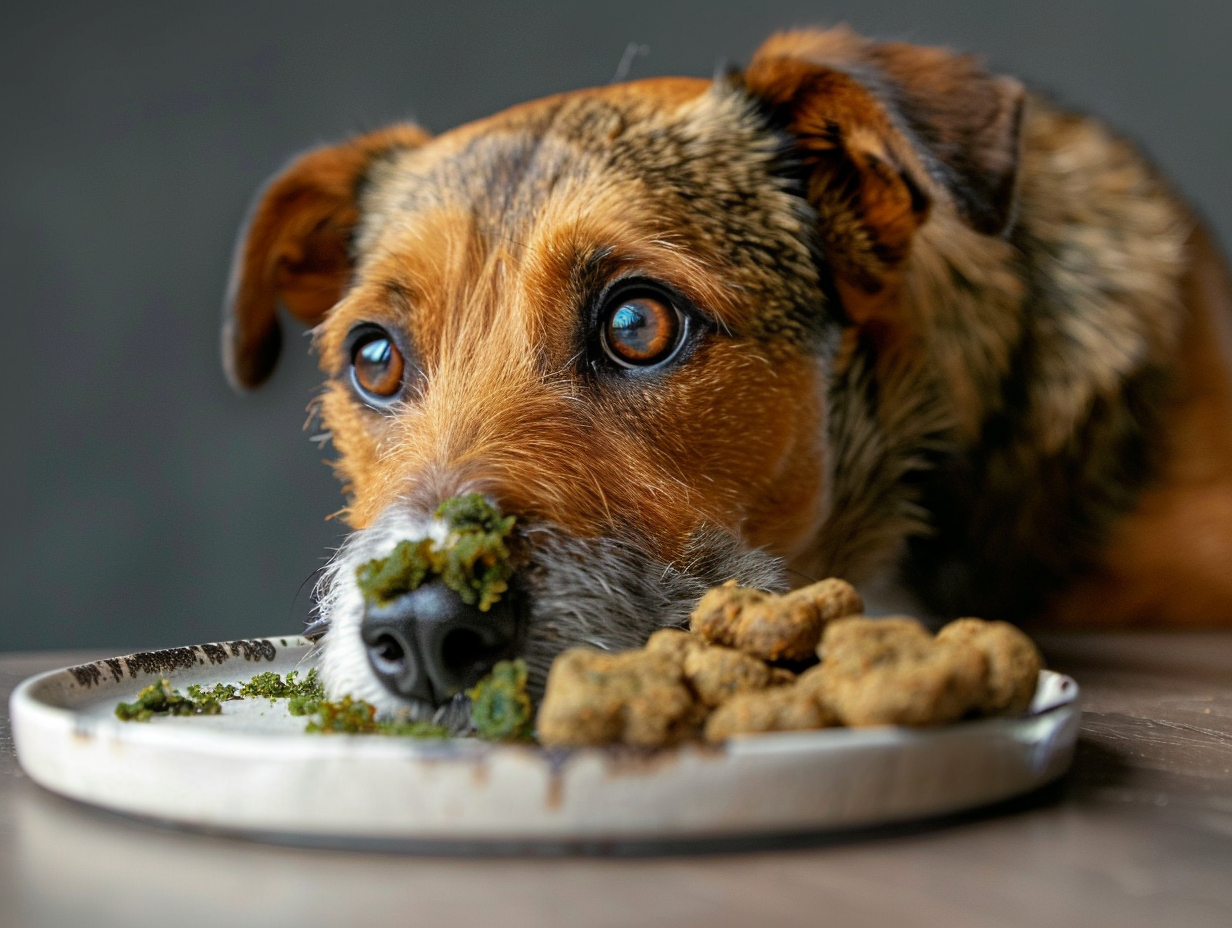We take care of everything when it comes to our dogs' health. But certain things can catch us off guard, prompting a frantic search on the internet about what to do. One situation that may send a ripple of worry to every pet owner is if our dog accidentally consumes moldy dog food.
While it may appear harmless, consuming moldy food is risky for their health. Let’s explore some details to understand better the potential risks of consuming moldy food and how to handle this situation.
Is Moldy Food Harmful for Dogs?
Yes, moldy food can be harmful to dogs as it contains mycotoxins. Molds produce this toxic substance in food and plant material, including cheese, bread, fruits, and dog food.
Mold mainly occurs when dog food is improperly stored or kept past its expiration date. Moisture, warm temperatures, or exposure to air can also encourage mold growth in dry kibble and wet dog food.
What Do You Do When a Dog Accidentally Eats Moldy Food?
If your dog has accidentally eaten moldy food, you should take prompt action to ensure their well-being. Here are a few steps to follow:
1. Contact a Veterinarian
If your dog has ingested something potentially harmful, you should consult a professional. You should also tell your veterinarian what type and amount of moldy food your dog consumes and how long it has been since it last ate it.
If you cannot contact a veterinarian, contact the
Animal Poison Control Center at (888) 426-4435.
2. Monitor for Symptoms
You should keep a close eye on your dog and keep track of any symptoms that might appear within 24-48 hours of eating moldy food. Some common symptoms of mycotoxin poisoning may include:
- Vomiting
- Diarrhea
- Agitation
- Lethargy
- Incoordination
- Tremors or seizures
- Loss of appetite
- Abdominal pain
- Elevated body temperature
In addition, a specific type of mycotoxin, aflatoxin, can affect a dog’s liver function. In such cases, you’ll notice symptoms like yellowing of the skin (jaundice), lethargy, or changes in behavior. However, these symptoms might take a few days to appear, and it might be too late for treatment.
That’s why the best action is to consult a veterinarian immediately after your dog has eaten moldy food.
3. Provide Fresh Water
While you contact your veterinarian and wait for their instructions, ensure your dog can access clean, fresh water. This will serve a dual purpose: First, it’ll help flush out toxins from the dog's body, which might help reduce the impact of moldy food. Second, it will help prevent dehydration, especially in dogs who have experienced symptoms like vomiting or diarrhea.

How to Prevent a Dog From Eating Moldy Food?
Consuming moldy food can have a severe effect on a dog’s health. That’s why taking specific proactive steps to prevent such incidents is essential. Here are some tips to help you get started:
Ensure Proper Storage
Ensure you’re storing your dog’s food properly and adhering to the storage guidelines recommended on the product packaging. Most dry dog foods should be kept in a dry place with a cool, stable temperature. The food should be kept away from moisture, heat, and excessive exposure to air, as that can trigger the growth of molds.
Our cold-pressed dog food may last longer because your dog needs less food to feel full. Airtight containers ensure that no food goes to waste.
Regular Inspections
Check your dog’s food regularly for signs of mold. If you notice unusual colors, odors, or textures, discard the food immediately.
Also, keep track of the food's expiration date, especially if you store it in a separate container rather than its original packaging.
Secure Trash Cans
Keep the trash cans in your home closed and secured to prevent your dog from scavenging for moldy or spoiled food. You can keep the trash can in a place that is less accessible to your dog and use childproof latches on the cabinet that holds it.
If you are disposing of something hazardous for your dog, try to use a secure outdoor trash can that is out of their reach.
Supervise Their Outdoor Activities
Be mindful of the places where you take your dog for walks. They might be tempted to explore places where trash is stored and consume potential hazards like moldy food or discarded items, which could pose a health risk.
Give Proper Training
Use positive reinforcement techniques such as verbal praises and treats as rewards to teach your dog various commands, especially "leave it" or "drop it." These will help discourage them from picking and consuming anything that can harm their health.
Regular Vet Check-Ups
Schedule regular veterinary check-ups to monitor your dog's overall health and well-being. This will help you address dietary concerns and get professional advice to prevent unforeseen health issues.

Summing Up: What Happens If My Dog Eats Moldy Dog Food?
Moldy food can cause severe problems for dogs. Therefore, as responsible pet owners, we want to take every precaution to store their food correctly and regularly inspect the meals for any signs of mold.
If a dog accidentally eats moldy food, you should take prompt action to prevent unforeseen circumstances. We recommend contacting a veterinarian or the Animal Poison Control Center immediately.
FAQs
Let’s answer some frequently asked questions about a dog’s health and moldy dog food:
1. Can dogs get sick from eating moldy dog food?
Yes, dogs can get sick from eating moldy dog food, as the mold may contain mycotoxins. These toxic substances can lead to various health issues in dogs.
2. What do I do if my dog eats moldy food?
If your dog has eaten moldy food, consult a veterinarian immediately. They’ll advise you on how to handle the situation based on what type and amount of moldy food your dog consumes.
3. How long after eating moldy food will a dog get sick?
You might start noticing symptoms of mycotoxin poisoning caused by eating moldy food within 24-48 hours. The initial symptoms may include vomiting, diarrhea, agitation, lethargy, tremors, incoordination, seizures, loss of appetite, abdominal pain, and fever.
However, a specific type of mycotoxin, aflatoxin, can take a few days to show the first symptoms. That’s why it’s recommended that you consult a veterinarian immediately after your dog has eaten moldy food.





